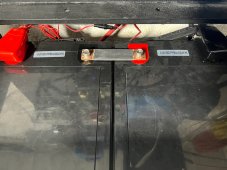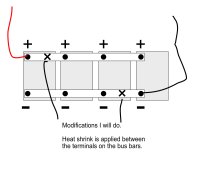Repro
Solar Enthusiast
I mentioned that I had a possible defective Lion Energy UT1300 last year mixed in one of my postings. Some asked how the customer service is with return/replacement. Well here is what happened and what I am doing about it. Nothing bad to report.
I was told to keep an eye on the battery for a while longer, so I did. I have four UT1300's that I purchased in April, May and June of 2020. I removed them from the system and fully charged each one individually with my AIMS charger. I did a capacity test (East Tester ET5410) on two of the batteries so far, the third is testing now. The first battery I tested was the suspected battery. Fully charged at 13.34V after settling, I connected it to the electronic load tester and it stopped at 73.490 Ah. The second battery tested at 103.23 Ah and the third is testing as of this writing.
I contacted Lion Energy with my results, they asked me to conduct a second test to ensure consistency. The suspected battery is charging and should be full before I go to bed. I will connect it to the tester and see what the results are in the morning. Lion Energy is awaiting the results as well. Assuming the results will be the same, I will start the warranty process.
I will post everything here letting everyone know how this works and how Lion Energy responds warranty claims. I have a really good feeling that this will go well. Let's see.
I was told to keep an eye on the battery for a while longer, so I did. I have four UT1300's that I purchased in April, May and June of 2020. I removed them from the system and fully charged each one individually with my AIMS charger. I did a capacity test (East Tester ET5410) on two of the batteries so far, the third is testing now. The first battery I tested was the suspected battery. Fully charged at 13.34V after settling, I connected it to the electronic load tester and it stopped at 73.490 Ah. The second battery tested at 103.23 Ah and the third is testing as of this writing.
I contacted Lion Energy with my results, they asked me to conduct a second test to ensure consistency. The suspected battery is charging and should be full before I go to bed. I will connect it to the tester and see what the results are in the morning. Lion Energy is awaiting the results as well. Assuming the results will be the same, I will start the warranty process.
I will post everything here letting everyone know how this works and how Lion Energy responds warranty claims. I have a really good feeling that this will go well. Let's see.






